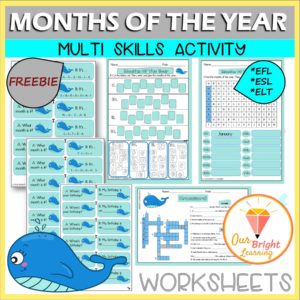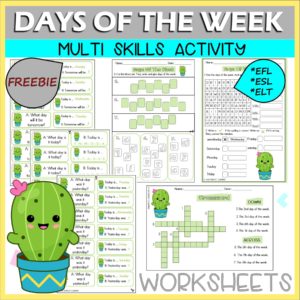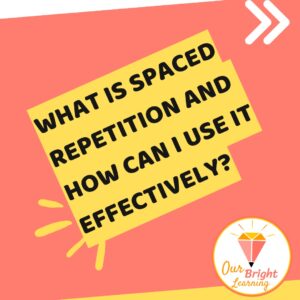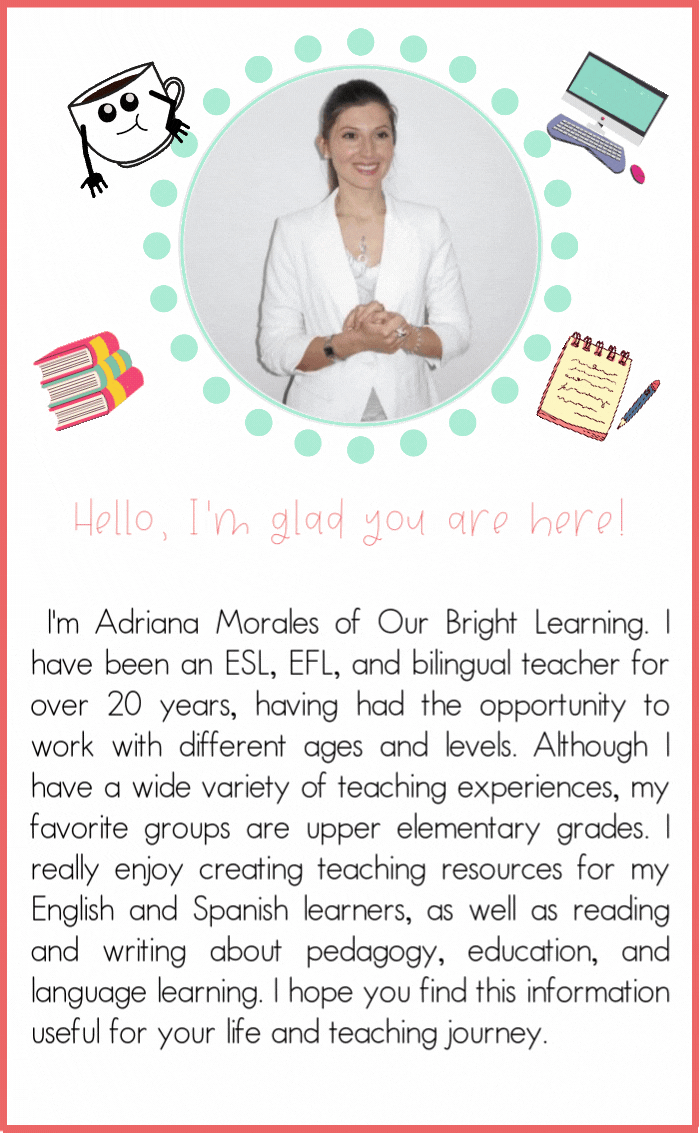Boosting Memory and Retention of Vocabulary in ESL and EFL Young Learners: 7 Proven Tools and Strategies
Vocabulary
Photos and gifs: https://giphy.com/ and pixabay.com
Hey there, bright teachers. Welcome back to our blog. Today I wanted to share with you some tips and tricks I use with my ESL and EFL children, and even with myself regarding vocabulary memorization.

To learn how to help our kids, it’s necessary to understand how our memory actually works.
Well, everything has to do with neuronal connections, which means that if neurons experience a wide variety of movements, they will certainly make several types of connections that will subsequently make a person remember many types of things or experiences. So, the wider our range of connections is, the bigger our memory storage capacity will be too.

But Adriana, is this enough to help our learners memorize vocabulary more effectively?
This was just a broad explanation on how neurons work, but to really help our ESL and EFL children retain more, it is necessary to produce the same neuron activation several times so that their memories become part of their storage. This means that the more they do something, the easier it will be stored in their brains.

Now that you have a clearer understanding of the way our brain works to memorize new things, I’m going to share with you my most effective strategies to help my young learners acquire and retain more words over time.
1. Select the words carefully: Make a conscious selection of the words you want to teach; I keep it to a maximum of 6 words.
2. Use proper input: Introduce new language with meaningful and appealing input. It can either be a video, a song, a story, an article, or any other type of material. I would suggest you pick input with 80% of it containing pleasant and understandable language, and just 20% of it containing difficult language (including the target language). This careful selection might determine the success of the following strategies. After introducing these new words, ask your learners to infer the new meaning with their own words or even their own language. Then, clarify for them if it is necessary.
3. Work on your examples in advance: Prepare a set of fun/funny examples that involve the target vocabulary and your students’ names, habits, or typical behaviors. This is really effective if you want to create an imprint on their brains. Remember to be prudent when creating these examples and to avoid negative comparisons or characteristics that might offend your children. Remember…we tend to more easily remember the sentences we link to our lives, so try to include as many children as you can.
4. Drawings and Picture Creation: Challenge your students to make some creative, colorful, and appealing posters or drawings in which they represent some funny/fun examples that create a strong link to them. You can either do it in groups, pairs, or individually but just make sure that if you do it in groups or pairs, all of the members of the groups are included in the pictures and sentences. Establish a corner in the classroom where the posters might be exposed and frequently reviewed. If you don’t have space in your classroom, pick some pages from their notebooks in which they can work on these “vocabulary drawings.” I’ve noticed that this type of task makes it easier for my students to retrieve new language, even the dreaded phrasal verbs.

5. Promote Oral Interaction: Create some oral interaction activities that will allow your learners to use the language learned. You could even use Chat GPT to create some role–plays and dialogues.
6. Enhance Written Production: Design some writing prompts that allow your learners to explore their writing skills as they use the acquired vocabulary.
7. Use Spaced Repetition: Do you remember the sentence “Use it or lose it?” Well, if our kids don’t use what we have taught them, their brains will probably erase that information soon. To combat this, I suggest you create a set of games and activities that will allow you to review the words with excitement and pleasure. By the way, to check out some packs of activities that might be useful.


In order to accomplish real results, we must learn how to use spaced repetition; see my Instagram post about it.
By now, many of you must be saying, “but Adriana, I have done most of the strategies you have previously described, and I haven’t seen remarkable results. Is this as effective as you say?”
My answer to this question is “Yes, it is!” If you make a plan, stick to it, and primarily use spaced repetition, the results will come. So…GO FOR IT!
Bibliography:
VIDEO: http://www.youtube.com/watch?v=TqFtWwQCzFI
Ally, B.A. et al. (2013). A case of hyperthymesia: Rethinking the role of the amygdala in autobiographical memory. Neurocase 19(2): 166–181. doi:10.1080/13554794.2011.654225.
Anderson, M.C. and Hanslmayr, S. (2014). Neural mechanisms of motivated forgetting. Trends Cogn Sci. 18(6): 279–292. doi: 10.1016/j.tics.2014.03.002
Carr, M. et al. (2011). Hippocampal replay in the awake state: a potential physiological substrate of memory consolidation and retrieval. Nat Neurosci 14(2): 147–153. doi:10.1038/nn.2732.
Dong, Z. et al. (2015). Long-term potentiation decay and memory loss are mediated by AMPAR endocytosis. J Clin Invest. 125(1):234-47. doi: 10.1172/JCI77888.
Gonsalves, B. and Paller, K.A. (2002). Mistaken memories: Remembering events that never happened. Neuroscientist 8(5): 391-5.
Nørby, S. (2015). Why forget? On the adaptive value of memory loss. Perspect Psychol Sci 10(5):551-78. doi: 10.1177/1745691615596787.
Poe, G.R. (2017). Sleep is for forgetting. Journal of Neuroscience 37(3):464–473.
Preston, A.R. and Eichenbaum, H. (2013). Interplay of hippocampus and prefrontal cortex in memory. Curr Biol 23(17): R764–R773. doi: 10.1016/j.cub.2013.05.041.
Ricker, T.J., et al. (2016). Decay theory of immediate memory: From Brown (1958) to today (2014). Q J Exp Psychol (Hove) 69(10): 1969–1995. doi:10.1080/17470218.2014.914546.
Sackheim, H.A. (2014). Autobiographical memory and electroconvulsive therapy: do not throw out the baby. J ECT 30(3):177-86. doi: 10.1097/YCT.0000000000000117.








Discussion about this post